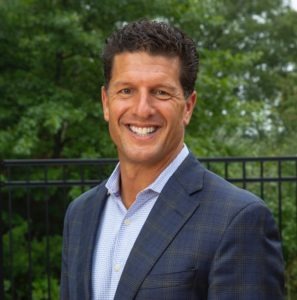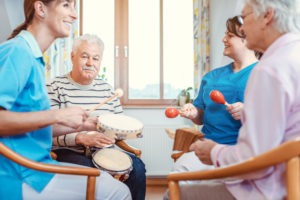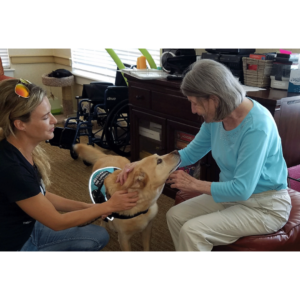Senior Living Community Finds Connections and Support from Cadet Volunteers
Finding new ways to provide residents with companionship and support can be challenging for many senior care communities. But the Kempton of Charleston Senior Living Community found a unique solution right next door.

Lindsay French, executive director of Kempton at Charleston
Located in Charleston, South Carolina, Kempton of Charleston provides assisted living, memory care, rehabilitation, and long-term skilled care. It is next door to The Citadel, a military college. Lindsay French, executive director of Kempton at Charleston, earned her master’s degree at The Citadel, and has connections there.
French explains that given The Citadel’s close proximity to the Kempton of Charleston campus, it made sense to connect. Kempton of Charleston formed a unique partnership with the school. As part of earning community service hours, cadets from The Citadel frequently visit Kempton of Charleston residents. The program started last November and has been a success.
How the Partnership Works
“We’ve shared information about the partnership, and the residents talk a lot about it amongst themselves,” says French. As a result, they’re already well aware of the partnership and can choose if they would like to participate.
The cadets visit residents in between or after classes. Kempton of Charleston’s Activities Director, Leah Hall, prepares a list of residents who would like to receive visits. The cadets knock on residents’ doors and invite them to visit, play a game, go for a walk, or participate in activities. The residents are able to choose what they would like to do, and Kempton of Charleston provides the cadets with a list of ice breaker questions that they can use to help start conversations.
“Leah invites the cadets to visit with all of our residents,” explains French. “The cadets maintain their visits with residents that ask for a return visit.” She notes that almost all residents request repeat visits with the cadets.
“It’s completely win-win,” French says of the partnership. “The residents love the energy of the young people and admire their dedication to their education at The Citadel. Some of the Kempton of Charleston residents attended The Citadel, which is a fact that enhances the relationship.”
One such resident is 81-year-old Ben Moise, who attended The Citadel in the 1960s. “I’ve found out that a lot has changed at The Citadel, but a lot has not,” he says. He explains that the school’s uniforms are similar to how they were when he attended the school.
Cadets like 20-year-old Kanyia Purefoy, a sophomore, enjoy visiting with the residents. “I like talking to seniors and the staff is very nice,” Purefoy says. “I try to go on a regular basis so they can recognize me and say to me, ‘Oh. You’re back!'”
Future Partnership Opportunities
Given the success of the program, the bond between Kempton of Charleston and The Citadel continues to grow. This spring, Kempton of Charleston plans to start hosting volunteers from The Citadel’s Swain Department of Nursing. The students will volunteer at Kempton of Charleston, providing clinical services.
The cadet program will also continue. “The residents love this partnership and really enjoy the interaction with the young cadets,” says French. “Some cadets who are graduating or have completed their service hour requirements promise to keep coming back, making the program even more meaningful.”

Paige Cerulli is a contributing writer to i Advance Senior Care.
Related Articles
Topics: Activities , Featured Articles , Rehabilitation , Resident Care











